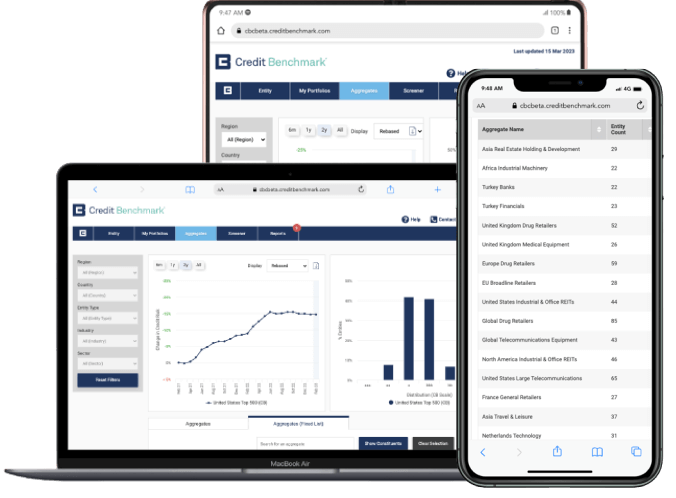
Understand your risk
Request a coverage check of your portfolio & access unique insights and analysis from our exclusive, contributed credit risk dataset.


Confidently underwrite more opportunities within your target geographies, sectors and credit risk tolerance
Sift out which opportunities justify the attention of precious analyst resources especially in the more opaque private or unrated space.
Build portfolio resilience and fine-tune underwriting strategy by monitoring the portfolio by individual names, sectors and geographies with consensus credit risk data and analytics.
Facilitate more meaningful and frequent management reporting, especially under quickly changing market conditions.
Make better sense of the legal entities in a book of business with coverage of parent and subsidiary-level entities and using Credit Benchmark’s sophisticated mapping engine.
Help CPR actuaries finesse pricing models with unique consensus LGD data and sector credit risk correlations produced from the expertise of global banks.

Entities with Credit Consensus Ratings
Bond and Loan Rating Assessments, Representing $34+ Trillion Outstanding
Risk Observations Feeding Into Twice-Monthly Data Updates
Credit Risk Observations Collected Since Launch in 2015
Industry & Sector Indices
Countries Covered
Major Global Banks Contributing, Almost Half Are GSIBs
Credit Analysts Contributing Risk Views
Of Universe Unrated by Traditional Rating Agencies
Of Corporate Universe Are Private Companies
Unparalleled coverage of public and private issuers; filling the gaps left by traditional ratings agencies.
Free from “issuer-pays” conflict and any bank bias.
Driven by the credit views of >40 of the world’s largest regulated banks, almost half of which are GSIBs.
Risk data is processed through a sophisticated purpose-built mapping engine.
The consensus is refreshed twice monthly to provide dynamic indicators of potential credit risk changes.
Assess risk over the lifetime of a transaction.
Ease of internal integration within reporting.
A unique growing global dataset.
